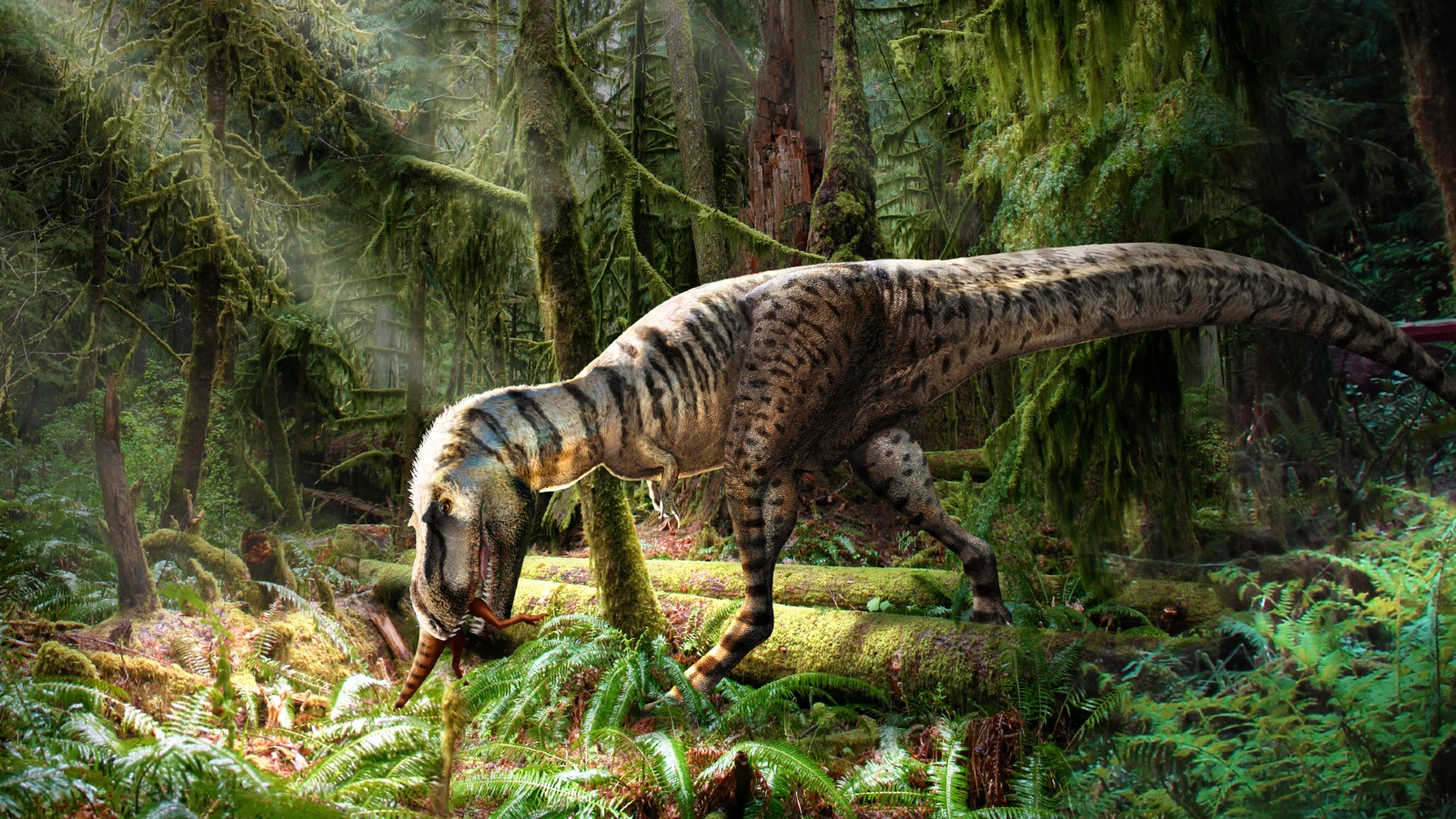
Non-avian dinosaurs have not roamed Earth for around 66 million years. But thanks to the fossils they left behind, we can piece together their history. And this year, paleontologists uncovered even more ancient clues about our planet's former residents. From a tyrannosaur's last meal and communal nests to a fossilized voice box, here are 10 of the best dinosaur fossils unearthed this year.
First-ever tyrannosaur meal

Researchers in Canada discovered the near-complete remains of a teenage tyrannosaur with its final meals perfectly preserved in its stomach. It was the first time that food had been found inside tyrannosaur guts.
The stomach of the juvenile Gorgosaurus, which dates to around 75 million years ago, contained two sets of hind legs belonging to the smaller bird-like dinosaur Citipes elegans. Researchers believe the young tyrannosaur tore the smaller dinosaurs in half and ate their legs, leaving the rest of their bodies untouched.
The findings suggest that juvenile tyrannosaurs, including Tyrannosaurus rex, preferred hunting smaller prey rather than going after the bigger dinosaurs that adult tyrannosaurs would have targeted.
Never-before-seen 'titan'

A new species of titanosaur was identified from 122 million-year-old fossils found in Spain. The gigantic long-necked dinosaur was likely as big as a basketball court.
The newly identified species, named Garumbatitan morellensis, belongs to the sauropod group — long-necked dinosaurs including Diplodocus and Brachiosaurus. Its bones are less distinctive than those of other species in this group, which suggests it is a primitive sauropod species.
Until now, scientists didn't know where sauropods originated. But the new fossils hint that they may have first emerged from around what is now the Iberian Peninsula (Spain and Portugal).
Footprint-covered cliff

Researchers discovered that a remote cliff in Alaska was covered in fossilized footprints from dozens of different dinosaurs.
The 20-story rock face, which researchers dubbed "The Coliseum," contains tracks from horned dinosaurs, small raptors, duck-billed dinosaurs and at least one tyrannosaur. The footprints were not immediately obvious to the researchers until the rock caught the sun at a specific angle. But they are "incredibly detailed."
Around 70 million years ago, the cliff was a muddy track next to a watering hole. But at some point after the footprints fossilized, the ground was lifted into the air and turned on its side by a tectonic plate collision.
'Mortal combat' battle
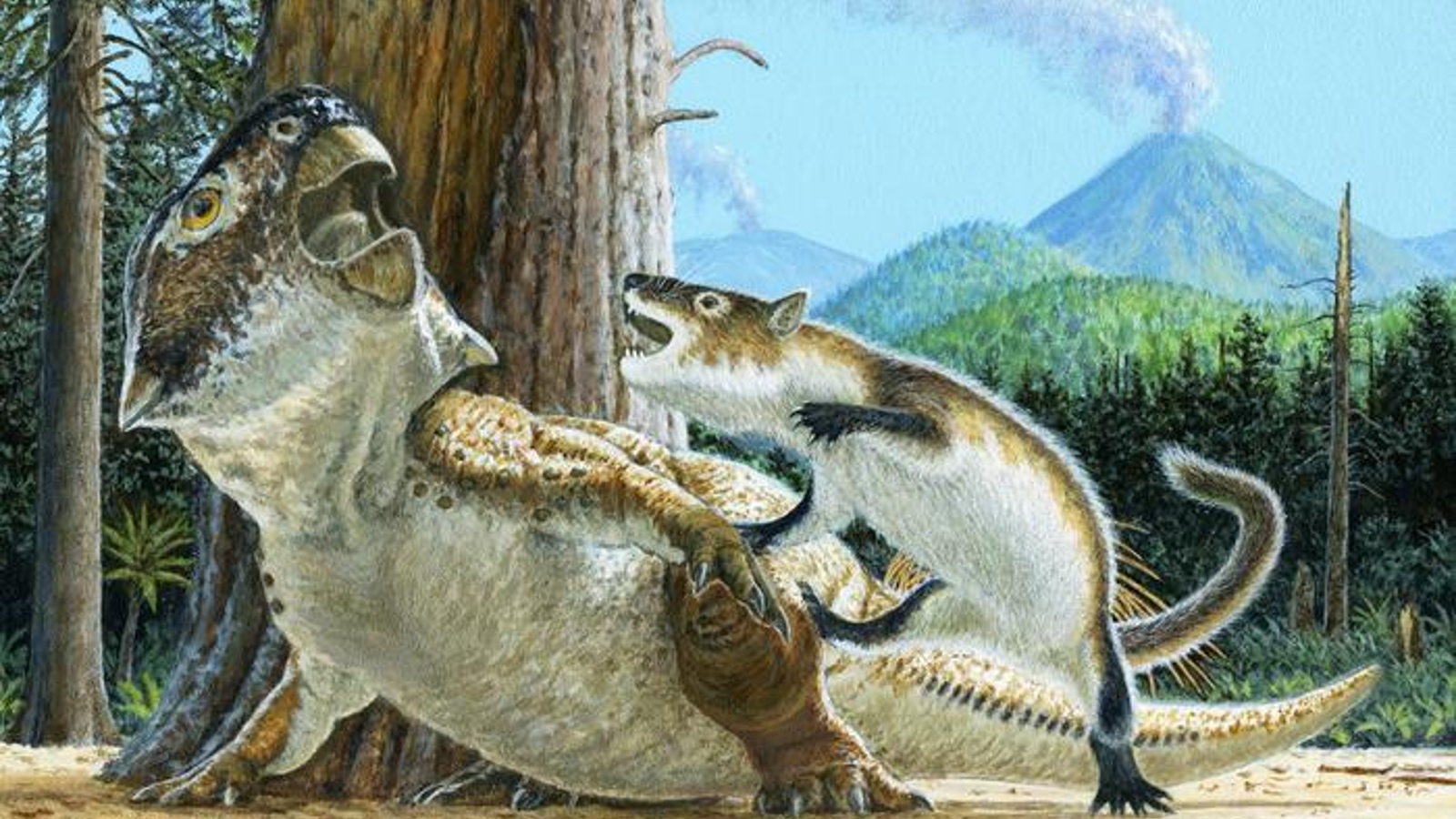
Researchers exploring China's "dinosaur Pompeii" discovered the entwined fossils of a small bipedal dinosaur and a badger-like mammal that appear to have been locked in a battle to the death when they were entombed by a volcanic eruption 125 million years ago.
Experts believe the rodent-like mammal, Repenomamus robustus, likely won the fight against the dinosaur from the genus Psittacosaurus because the furry creature's teeth were embedded in the dinosaur's ribcage.
The new finding upends researchers' assumptions that dinosaurs mainly hunted mammals and not the other way around.
Fossilized voice box
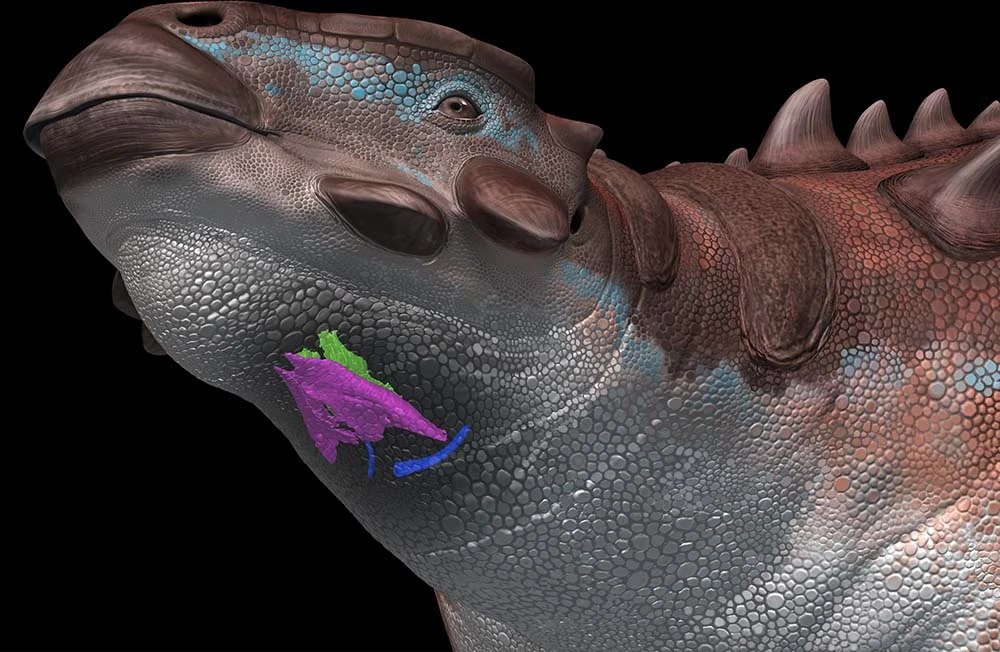
Researchers in Mongolia discovered an 80 million-year-old voice box from an armored dinosaur. It is the first-ever non-avian dinosaur larynx ever found.
The unique body part belonged to Pinacosaurus grangeri — a squat, armor-plated and club-tailed ankylosaur.
Until now, researchers thought that most dinosaurs communicated via crocodilian-like grunts, hisses, rumbles and roars. However, the shape and structure of the voice box hint that it was capable of producing more bird-like sounds, including chirps, which suggests dinosaurs may have had a more complex vocal repertoire than previously thought.
Animated 'missing link'
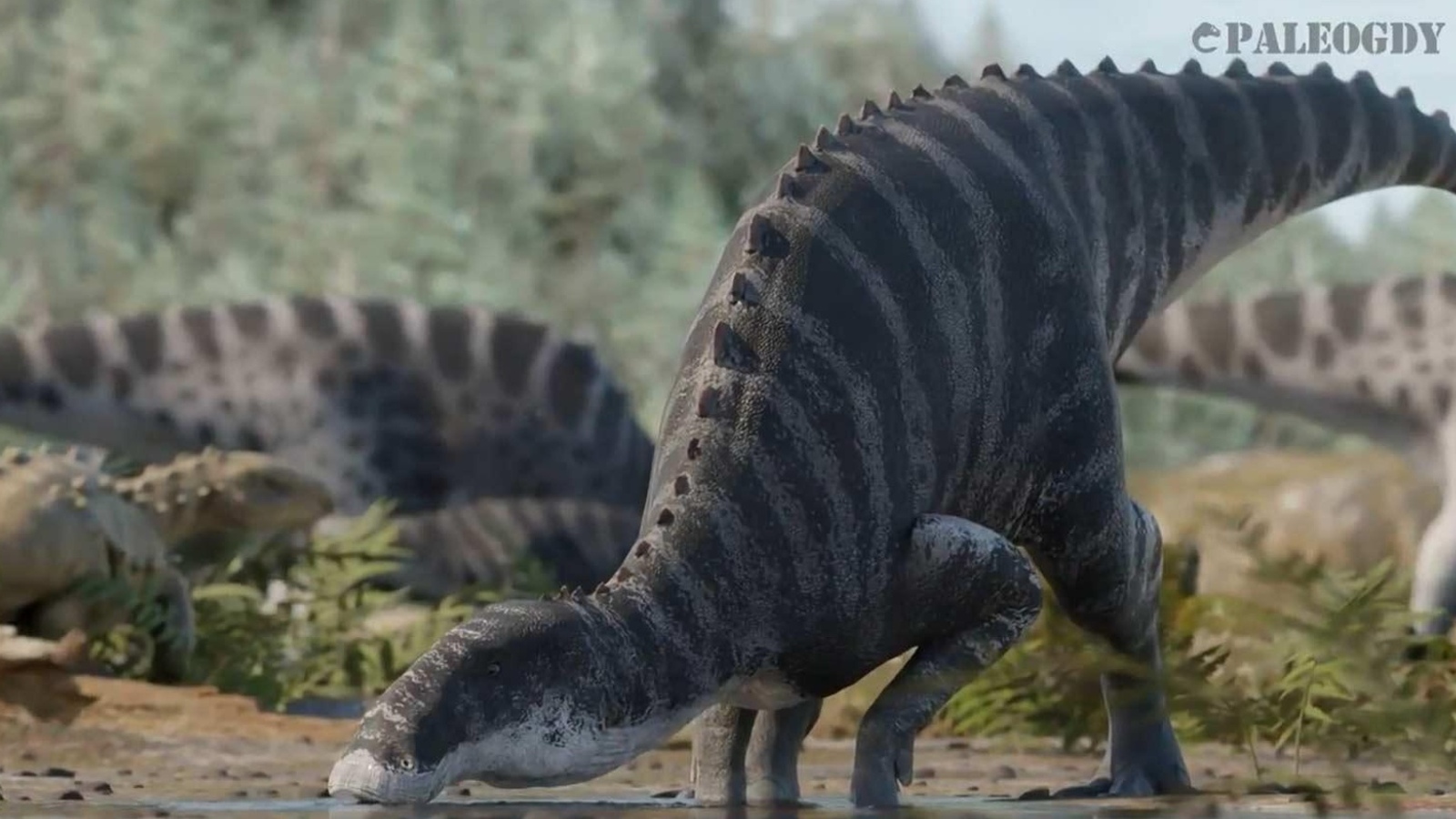
A never-before-seen duck-billed dinosaur was unearthed in Chile and brought to life in a stunning animation that showed it walking, drinking and socializing.
The newly identified hadrosaur species, Gonkoken nanoi, dates to around 72 million years ago. By analyzing its teeth, vertebrae, skull bones, jaw fragments, limb bones and ribs, researchers recreated what it may have looked like and how it behaved.
The team believes that G. nanoi represents an "evolutionary link" between older and younger hadrosaur species.
Blade-like armor

A never-before-seen species of ankylosaur discovered in the U.K. was likely covered in blade-like spikes.
The new species, Vectipelta barretti, dates to 140 million years ago. It had osteoderms, or bony plates, in the shape of a scythe that stuck out from the rest of its armor plating. Researchers reconstructed its entire skeleton using a computer program to piece together the fossils they found.
Two other ankylosaur species have also been discovered in the same area as the new fossils but V. barretti does not appear to be closely related to either of them. Instead, the new species is more closely related to ankylosaurs found in China. This hints that the armored dinosaurs may have undertaken a previously unknown migration from what is now Asia to what is now Europe.
A godly raptor
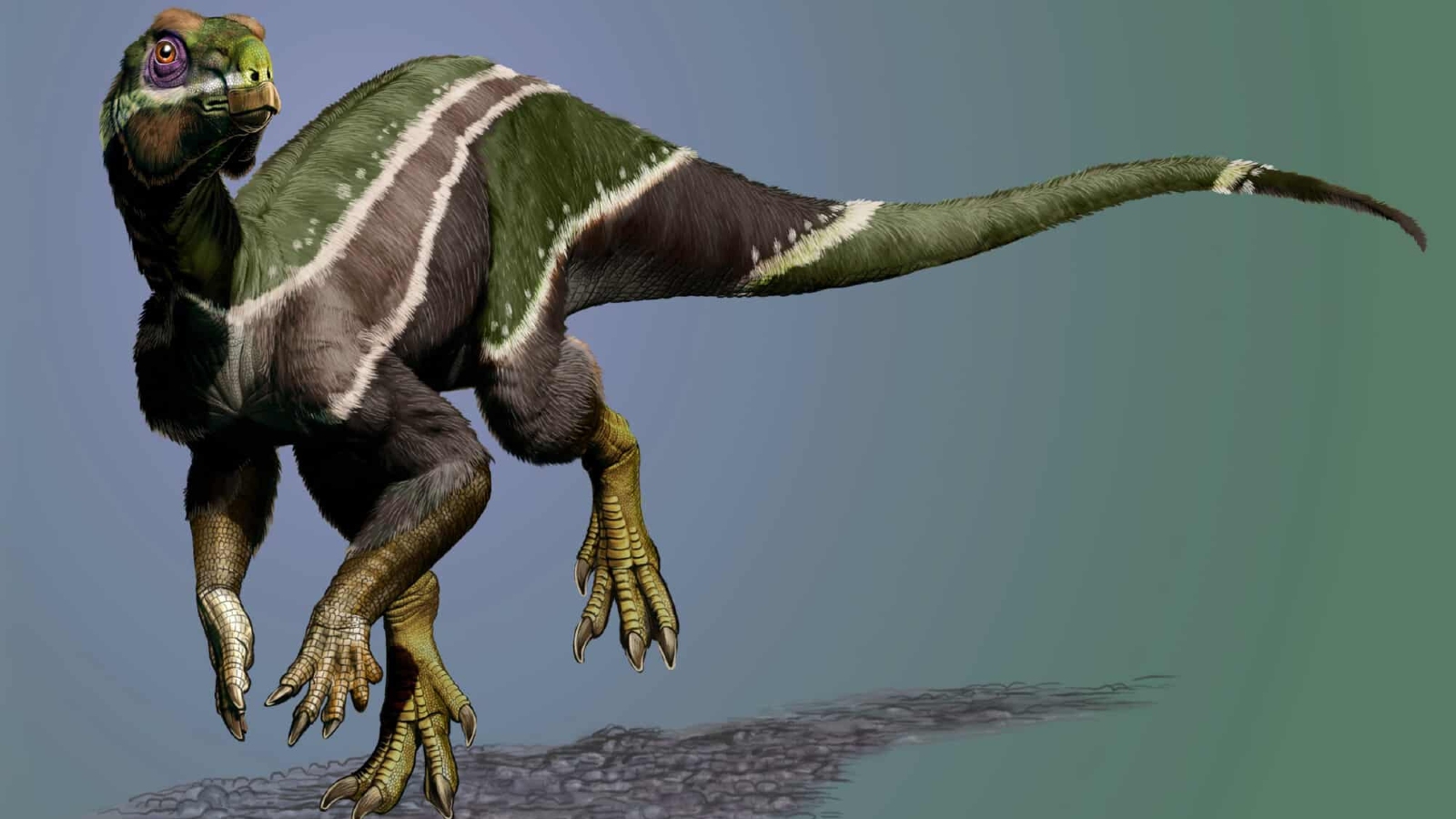
Researchers discovered a new species of plant-eating, raptor-like dinosaur from fossils in Utah and named it after a two-faced Roman god.
The newly described species, Iani smithi, dates back to around 99 million years ago during a period of extreme climate change that killed off multiple dinosaur lineages. It was likely a "missing link" between early bird-like dinosaurs and a group of duck-billed dinosaurs. The name Iani is a reference to Janus, the roman god of change who is often depicted with two faces.
"This dinosaur stood on the precipice — able to look back at the way North American ecosystems were in the past, but close enough to see the future coming like a bullet train," researchers said.
Feather X-rays

This year researchers reanalyzed fossilized feathers from several non-avian dinosaurs using X-ray scans. It turns out, dino feathers were more similar to modern bird feathers than we realized.
The fossils, which included feathers from Sinornithosaurus and Confuciusornis, contained traces of corneous beta-proteins (formerly known as beta-keratins), which are proteins necessary for strengthening feathers for flight. When the researchers compared these proteins to the same proteins from zebra finches (Taeniopygia), they found that they were remarkably similar.
The researchers had expected that dinosaur feathers would be made from a more primitive version of the protein, but the results show that the same proteins have been present in feathers for eons.
"The chemistry of modern-day feathers is actually a lot more ancient than we previously thought," the researchers said.
Communal nests
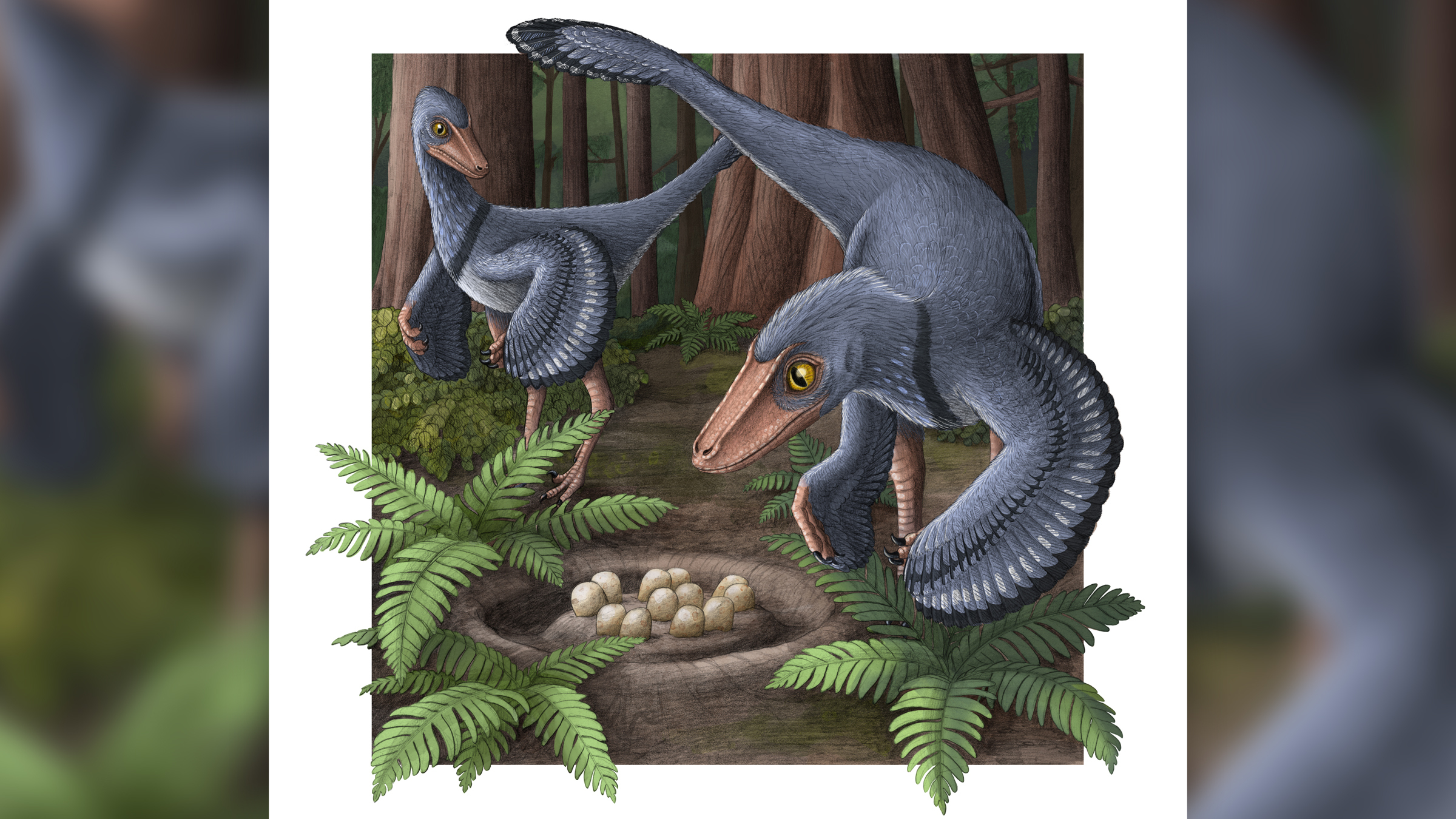
In Canada, researchers unearthed the fossilized remains of egg-filled nests that belonged to a small bird-like dinosaur, Troodon formosus.
The nests, which date back to 74 million years ago, had too many eggs for one individual to have laid alone, which suggests that multiple females likely shared a single nest. This is the first evidence of communal nesting ever seen in dinosaurs.
Analysis of the egg shells suggests that T. formosus was endothermic, or warm-blooded, which means the females may have taken turns brooding on top of the eggs.







